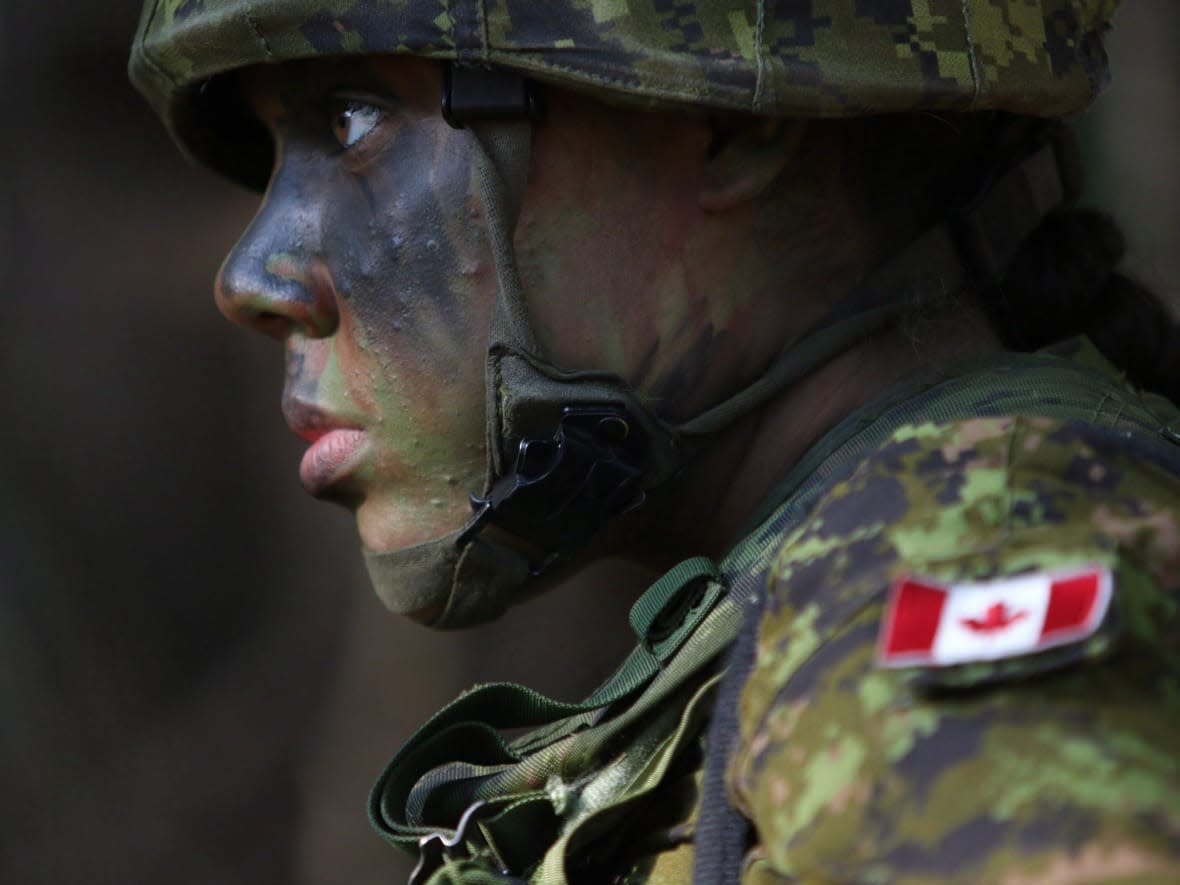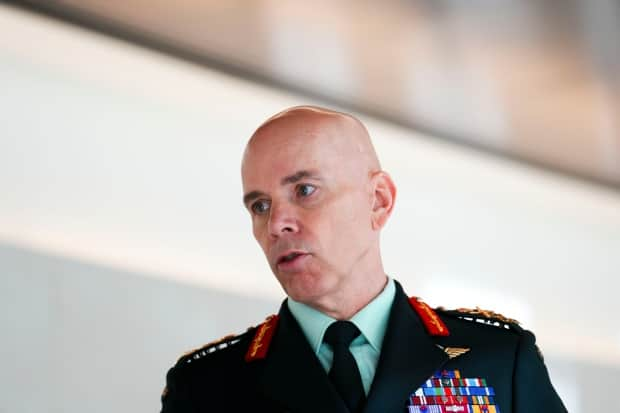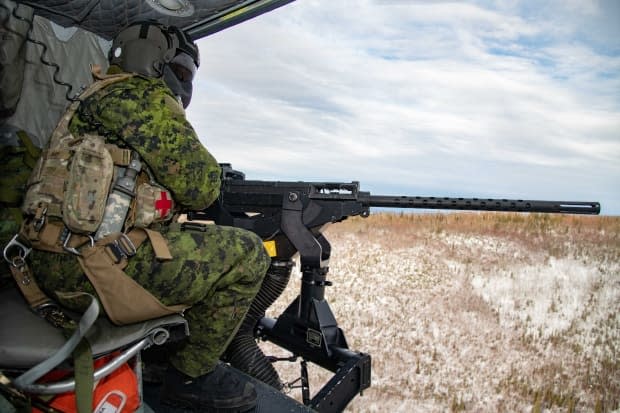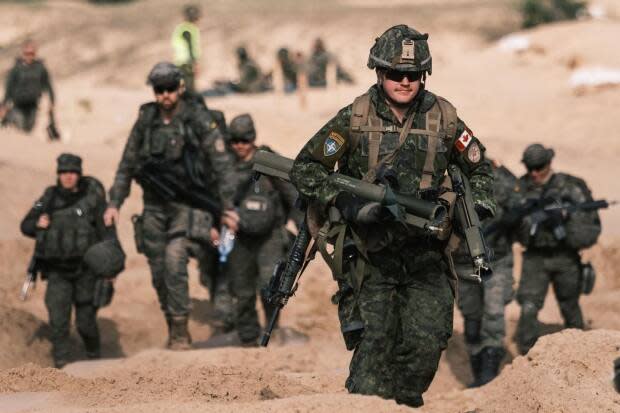Shooting blanks: Why so many Canadian defence policies fail to launch

With absolutely no exceptions, every defence policy presented by the Canadian government over the past five decades has presented a vision of the world beyond our borders going to hell in a handbasket.
The wars may be different, the adversaries might change, threats might have evolved — but the language almost always stays the same.
And almost without exception, none of those defence policies ever lived up to their hype, or to the expectations and political spin that accompanied them.
The ink wasn't even dry on some defence policies before they were being dismissed by people in government as unaffordable or overtaken by world events. Others died a quiet, curious death of benign neglect.
But the differences between the security and defence snapshot presented on Monday and those that came before it could not be more stark.

There's a shooting war in Europe — allies are openly talking about being in a "prewar" period. Russian submarine activity in the North Atlantic is at, or exceeding, Cold War levels. Canada's own top military commander is calling for the defence industry to be put on a "war footing." And many of the nuclear treaties that underpinned security during the standoff with the former Soviet Union have been dropped in the shredder.
When you look back at the past five decades, if ever there was a time to convince Canadians that the world is a nasty place and is likely to get worse, it's now.

Gen. Wayne Eyre, chief of the defence staff, acknowledged the world and Canada are "in a fundamentally different situation now" than they were when previous policy reviews were released.
For that reason, he's arguing for a sense of urgency.
"What keeps me up at night — with the state of the world and what we need to do — is something I've been calling harmful bureaucracy," Eyre said in an interview late Friday with CBC News.
"Because that will inhibit our ability to implement this policy. It will slow us down. It'll be the molasses that does not allow us to proceed apace."
The new policy does contain the expected warnings about how Russia's war in Ukraine represents a threat to the stability of the post-Second World War international order. China was called out for having an eye on the Canadian Arctic, but in language that's more attuned to the tightrope Canada has tried to walk following the release of Michael Kovrig and Michael Spavor. The strategy promises to manage the relationship with Beijing through "frank, open and respectful dialogue."
The policy document also refers to how technology is reshaping conflict in both stark and subtle ways.
But the policy is also a political document, and its unstated intention may have been to prop up the Liberal government in the face of anxious allies and an increasingly uneasy electorate.
It also presents climate change as an important driver of future security threats through threats like natural disasters and forced migration.

Steve Saideman, a political scientist who holds the Paterson Chair in International Affairs at Carleton University, said he believes the emphasis on climate change and the Arctic is meant to sell the defence strategy to a skeptical public and a Parliament that may be reluctant to appropriate billions of dollars.
It also has the side benefit of undercutting a Conservative opposition which, in a previous iteration, made Arctic security an article of faith.
Such a focus does somewhat placate allies who recognize Canada's limited ambitions and even more limited capabilities, and want the country to pick something it can do and do it well.
To see how limited those ambitions are, all you have to do is look back at some of the commitments in previous defence policies.
The 'decade of darkness'
Even as western nations began cashing their so-called "peace dividends" at the end of the Cold War, a previous Liberal government's 1994 defence white paper (one of the few without a snappy title) issued a blunt warning:
"The world is neither more peaceful nor more stable than in the past. Canada's defence policy must reflect the world as it is rather than the world as we would like it to be."
The irony is that, in spite of the document's ominous tone, the government of Prime Minister Jean Chretien went on to cut more than $2 billion from the defence budget between 1994 and 1998 (taking it from $12 billion annually to $10 billion). The era was infamously dubbed "the decade of darkness" by a former chief of the defence staff, retired general Rick Hillier.
Still, that defence policy committed to keeping two warships, one battle group of soldiers, an additional infantry battalion group, a squadron of fighter aircraft, a flight of tactical transport aircraft and a headquarters contingent ready to deploy on multinational operations, either United Nations or NATO.
That would have been a commitment three decades ago of 4,000 military members.

Today, Canada is struggling to bulk up to a brigade of 2,200 soldiers as part of the NATO mission in Latvia. It periodically deploys frigates and minesweepers but has taken a step back from fighter jets.
All of that speaks to the need to replace decades-old jets and warships, including submarines.
The new policy talks about exploring options to acquire replacements for the second-hand Victoria-class submarines. Despite already having a proposal from the navy for eight to 12 conventional boats, the matter requires further study, Eyre said.
At the media availability that announced the policy, both Prime Minister Justin Trudeau and Defence Minister Bill Blair made the submarine program sound like a certainty. They also suggested the government would consider acquiring a nuclear-powered boat — a nod to Canada's exclusion from the AUKUS security arrangement involving the United States, the United Kingdom and Australia.
WATCH: Federal government's spending commitments won't meet NATO target
A previous defence policy — Challenge and Commitment, released by the Conservative government of Brian Mulroney — proposed the purchase of nuclear-powered submarines to patrol under the ice of Canada's Arctic.
In words that wouldn't be out of place in the latest defence policy, the 1987 policy review "confirmed that [Canada is] not able to meet [military] commitments fully and effectively. After decades of neglect, there is indeed a significant commitment-capability."
A little more than three years later, the Cold War was over and Mulroney's government was in deficit-cutting mode. The nuclear submarine proposal was the first thing to go.
Promise now, pay later
The fact that much of the funding in the new defence policy is backloaded to future years continues, in some respects, a tradition of previous Canadian governments.
In 1994, the federal Liberals promised to begin the process of replacing the navy's supply ships (a project still underway today). The Conservatives of 2008 said the Armed Forces would reach its assigned strength in 2028.
If there is a constant feature of five decades of these defence policies, it's their ad hoc, political nature.
"In a Canadian context, this is like a potentially generationally significant commitment of funding towards the military, if it can actually get out the door and spent," said Dave Perry, president of the Canadian Global Affairs Institute, who noted the last Liberal defence policy had a number of pretty promising initiatives.
"But those didn't seem to have a huge impact so far. So I think [there are] a lot of good ideas here [but] the real crux will be what can actually be implemented and done with them."

